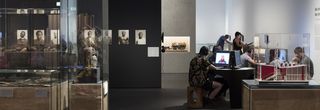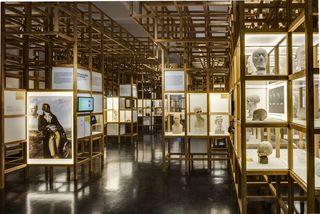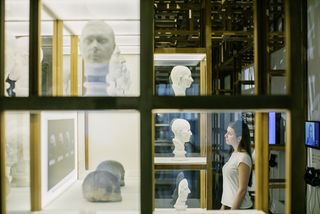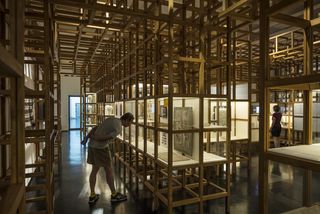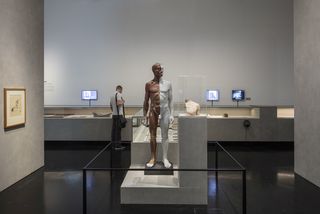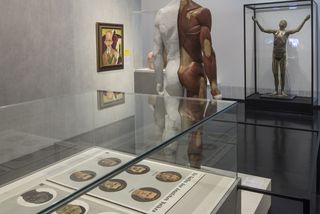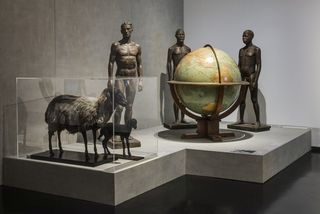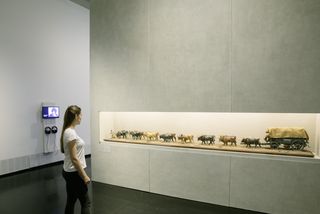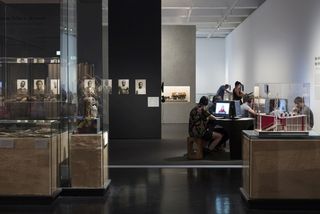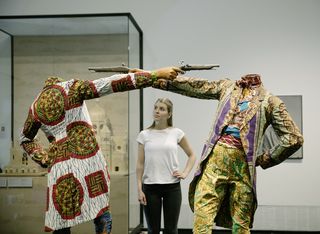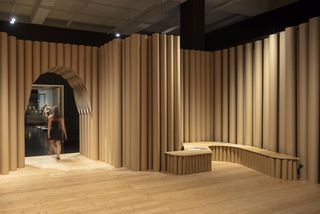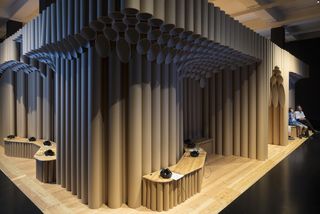Introduction
Curator: Susanne Wernsing
Scenography: KÉRÉARCHITECTURE, Berlin www.kere-architecture.com
Consultant: Prof. Dr. Christian Geulen (Universität Koblenz-Landau)
Curatorial team: Dr. Tiphaine Cattiau, Rebekka Rinner, Volker Strähle
Video curators: Mo Asumang, John Kantara, Barbara Lubich
Racism is an inhumane ideology, but at the same time an everyday occurrence that confronts many people with discrimination and violence. The colour of their skin, their appearance, their religion or their language lead them to have humiliating experiences which are almost unimaginable for other parts of the population. Racism not only hurts individuals but also violates the ideals of equality and freedom that form the basis for our democratic society. This exhibition investigates how these forms of racism are connected to the term “race”: a category which, while it appears to describe human differences, is in fact really used to justify political, social and cultural inequality.
Though people all over the world look very different from one another, there is no such thing as “human races”. “Races” are an invention whose catastrophic effects have wreaked harm since the 18th century. The exhibition analyses the scientific methods behind the development of this school of thought and presents images and media used to disseminate it to this day. One section addresses the role of the Deutsches Hygiene-Museum as a propaganda machine for so-called “racial hygiene” under National Socialism. Another chapter is devoted to the politics of racial exploitation in the colonial period, the aftereffects of which extend to today’s refugee movements.
All the sections give the floor to figures who have critically examined racial ideologies. Multimedia exhibits, filmed interviews and video installations present current topics for discussion: rampant casual racism, the debate on population genetics, returning stolen cultural assets or the challenges of a post-migrant society. The project team under curator Susanne Wernsing was advised by a working group made up of experts who deal with racist experiences on a personal or academic level, as activists or as part of education programmes. Their comments have become an important part of the exhibition. The design is the work of Berlin-based Kéré Architecture, who caused an international sensation in 2017 with their spectacular pavilion for the Serpentine Galleries in London.
Exhibiton Rooms
How different are we?
In the 18th century, thinkers of the Enlightenment believed that all human beings were created equal. In practice, however, they were treated very differently. Anthropologists, ethnologists and biologists tried to resolve this contradiction by examining the obvious differences between people, creating scientific categorisation systems, many of which revolved around the term "race". This was not only related to biological differences but also asserted that certain groups of people were at a higher level than others, and thus had more rights.
Where do we see "races"?
We see differences between people and believe that we are identifying “races”. In the 19th and early 20th centuries, the idea of “races” was widespread, especially in the imagery found in publications and exhibitions. Under National Socialism, depictions of this type were connected to the implementation of racial policy. The Deutsches Hygiene-Museum was one of the institutions to gain extensive publicity with propagandist exhibitions on the health of the Volk. In 1933 an exhibition at Dresden’s city hall was already slamming modern art as “degenerate”, and in 1939 the “German Colonial Exhibition” in Dresden emphasised the German right to colonial possessions.
Who are we? Who are They?
When we want to reassure ourselves of who "we" are, we often turn our focus towards things which feel foreign to us – to "them". To define the "West" today, we talk of "Islam" or the "Orient" even though these supposedly foreign cultures have long been part of "us". This is the ongoing legacy of the colonial age, when the great European powers divided the world up among themselves. The wielding of colonial might and economic dependencies are part of the history shared by Europe and the once-occupied countries. The consequences are still driving people into refugeeism to this day.
How do we want to live together?
Today, our society is characterised by a high level of cultural, religious and social diversity. Many people have a history of migration. Despite this long-shared experience, the phenomenon of race has not gone away. For those affected, racism is a bitter reality – in everyday life, at school and at work, in the media or in politics. And, apart from anything else, it is present in our own heads. How can we put an end to these discriminative patterns of thinking and acting? How can we develop rules of play for us to live together while also dealing with conflicts fairly?
Gallery
Funders
Funded by the Free State of Saxony as part of the regional “Integrative Measures” programme.

This measure is co-financed from public funds based on the budget drawn up by the members of the Saxon State Parliament.
Funded by the Local Action Plan for a diverse, international Dresden.


Funded by

under the federal programme
and the Free State of Saxony

Cooperations
Media partner
Accompanying programme

